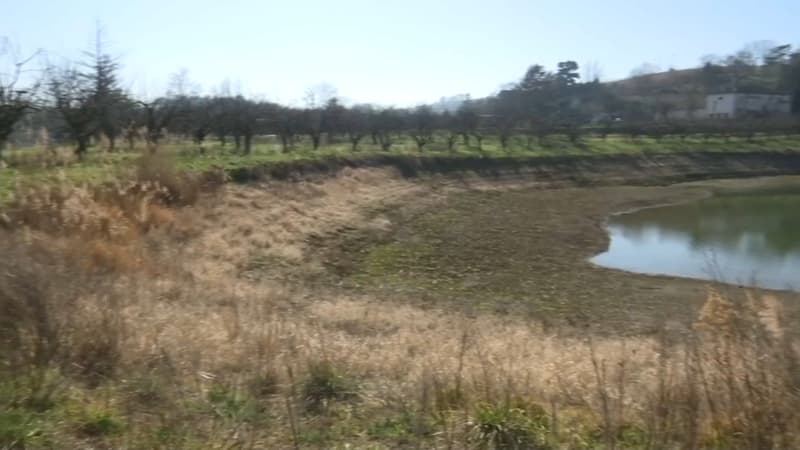Storage of water in disused wine vats, search for new sources to replace old exhausted ones: the firefighters of the Pyrénées-Orientales have sounded the general mobilization, in the face of an exceptional drought that increases the risk of fire. To fill the 17 chosen tanks throughout the department, firefighters collect water that was once abandoned, such as that which stagnates in swimming pools in the off-season.
At a campsite in Salses, near Perpignan, Petty Officer Olivier Jacquet, with a large clamp in hand, connects a tube submerged in the pool to the portable pump brought by the fire brigade. He then turns on the pump which transfers a few thousand liters of water to the red “high capacity tanker truck” (CCGC), parked a hundred meters away.
“Avoid using drinking water”
“We collect the water from the campsite to put it in a tank that will serve as a strategic reserve during the forest fire season and avoid using drinking water from the fire hydrants used by the population,” explains Captain Olivier Cyprien, who is in particular responsible for the forest defense in the Departmental Fire and Rescue Service (SDIS).
Once full, the truck travels a few kilometers to the Rivesaltes cooperative winery, where it will pour the water into a tank that is no longer used to store wine. On loan from winegrowers, this resin deposit could hold up to 380,000 litres, well above current SDIS targets.
Last year a fire reached the vineyard of the winery, he says, and adds: “If we can help facilitate the fight against the fire, inevitably, the winery owners and the managers of the winery are very supportive.”
The agreement signed between SDIS, the prefecture, the Chamber of Agriculture and the professional union of agricultural cooperatives establishes that firefighters have priority access to the water stored in these tanks. Farmers will also be able to use it, even during the forest fire season, provided they have been expressly authorized by the State services.
depleted water sources
In addition, the firefighters had to look for new sources of water called “raw”, of natural origin but not potable, capable of supplying their trucks in the event of a fire.
“Depuis le mois de mars, on s’est aperçu qu’avec la sécheresse, environ les deux tiers étaient épuisés. Donc, on a dû, avec les sapeurs-pompiers du département effectuer de nouvelles recherches d’eau brute”, poursuit- He. Each of the department’s 42 fire stations has identified new sources, particularly in rivers or canals, allowing trucks to quickly resupply in the event of a fire.
This research is all the more important since the action of bomber planes is also affected by the drought. “Il y avait trois lacs où les Canadair pouvaient aller écoper. Aujourd’hui, le level de ces lacs est trop bas. Ils sont obligés d’aller à l’étang de Salses”, seul point d’approvisionnement possible, note-t -He. However, “depending on the location of the disaster, the flight time is added and the Canadairs are shorter” at the fire site.
The Pyrénées-Orientales have already been the scene of the first major fire this year in France. Leaving the town of Cerbère on April 16, the flames covered 1,000 hectares and crossed the Spanish border.
This border department with Spain is the most affected by the drought in France. It has not experienced a comparable situation since 1959, the date of the first statistics of this type by department, according to data from Météo-France.
Source: BFM TV


